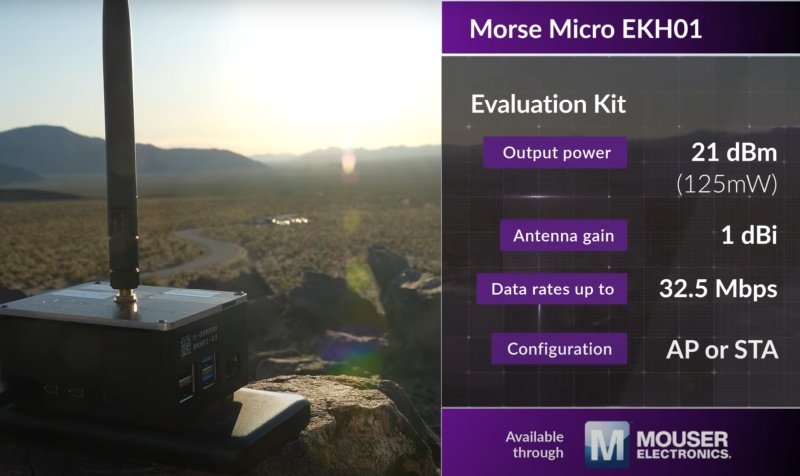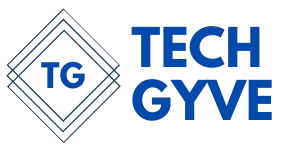In a groundbreaking achievement for long-range wireless communication, Morse Micro has shattered its own record with a successful Wi-Fi HaLow (802.11ah) data transmission over an incredible distance of 15.9 kilometers (9.9 miles) in the Joshua Tree National Park. This marks a significant milestone, expanding the possibilities for reliable, long-range connectivity in rural and remote areas.

Earlier this year, the company had tested Wi-Fi HaLow over 3 kilometers at a highly congested San Francisco beach. Now, Morse Micro has quintupled that range, proving that its cutting-edge technology can thrive even in rural landscapes with minimal interference.
What is Wi-Fi HaLow and Why Does it Matter?
Wi-Fi HaLow, based on the 802.11ah standard, represents a new frontier in wireless networking. Unlike traditional Wi-Fi, which operates at higher frequencies (2.4 GHz and 5 GHz), HaLow operates in the sub-gigahertz spectrum (850-950 MHz). This lower frequency allows for greater signal penetration, making it ideal for transmitting data over long distances or through obstacles like walls and dense forests.

What makes HaLow particularly compelling is its potential to bridge the gap between Wi-Fi and cellular networks, offering low-power, long-range communication for IoT (Internet of Things) applications without the need for a cellular connection. As more industries and rural infrastructures look to the future of smart agriculture, remote sensing, and large-scale IoT deployments, Wi-Fi HaLow’s long-range capabilities offer a cost-effective solution that could revolutionize these sectors.
Breaking the Record: 15.9km Range in Joshua Tree National Park
Morse Micro’s latest test in the wide-open expanses of Joshua Tree National Park stands as a testament to the power of Wi-Fi HaLow technology. The test achieved a stable connection over 15.9 kilometers (9.9 miles), establishing a new benchmark for long-range data transmission. At this impressive distance, the system delivered speeds of up to 2 Mbps, a significant feat considering the vast range and the absence of cellular interference.
In their previous test, conducted in the high-noise beach environment of San Francisco, Morse Micro achieved a maximum distance of 3 kilometers, with speeds ranging from 11 Mbps at 500 meters to just 1 Mbps at 3 kilometers. This new record underscores the power of Wi-Fi HaLow in areas with low interference, demonstrating its potential to serve large, open spaces like farmlands, forests, and national parks.

Overcoming the Challenges of Traditional Wi-Fi
Traditional Wi-Fi is great for urban areas and short-range connections, but it struggles with long-range connectivity and interference from dense networks of connected devices. Wi-Fi HaLow solves this by leveraging narrow frequency bands of 1, 2, 4, or 8 MHz, which makes it exceptionally resilient in environments filled with obstacles or competing signals.
However, it’s important to note that Wi-Fi HaLow is not compatible with conventional Wi-Fi systems. Users will require special receivers and infrastructure to take advantage of this next-gen technology, which limits its immediate adoption for consumer-facing applications. Nevertheless, its long-range, low-power capabilities open up transformative possibilities in industrial and agricultural sectors, where traditional Wi-Fi and cellular networks are often impractical or too costly.
The Future of Wi-Fi HaLow: Expanding Beyond Agriculture
While Morse Micro’s latest record-breaking test clearly demonstrates Wi-Fi HaLow’s potential for smart agriculture, the possibilities for this technology go well beyond farmland. As rural and remote areas continue to seek solutions for long-range, low-power connectivity, Wi-Fi HaLow could serve as an alternative to cellular infrastructure, providing reliable connectivity for applications such as wildlife tracking, environmental monitoring, and public safety.
Moreover, the technology could also find its place in public hotspots or other infrastructure where long-range, low-interference signals are crucial. As urban areas become more congested with cellular towers and Wi-Fi networks, HaLow could offer a clean, interference-free alternative for certain high-traffic zones.
The ability to maintain consistent speeds, even at nearly 16 kilometers, makes HaLow a prime candidate for large-scale IoT deployments, where numerous devices require consistent connectivity over a sprawling area.
A New Era in Wireless Communication
Morse Micro’s achievement of a 15.9-kilometer Wi-Fi HaLow transmission is more than just a technical milestone—it’s a glimpse into the future of long-range wireless connectivity. By overcoming the limitations of traditional Wi-Fi, HaLow is poised to play a critical role in expanding IoT and remote communication capabilities in areas where cellular networks either fall short or are too costly to implement.
As industries continue to explore the potential of IoT for applications like smart cities, autonomous vehicles, and environmental monitoring, Morse Micro’s Wi-Fi HaLow could very well lead the charge in shaping a more connected world.
Source:
